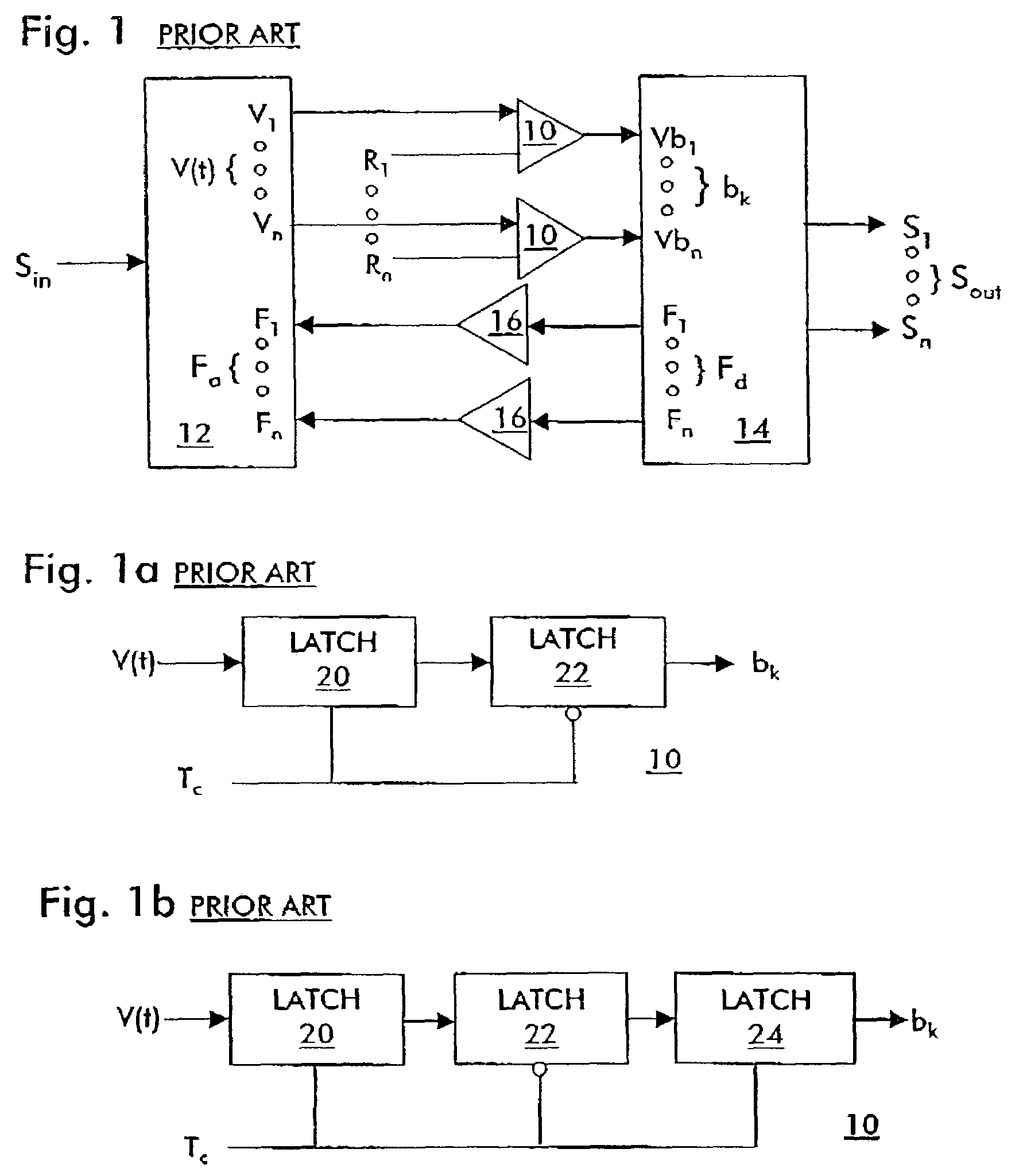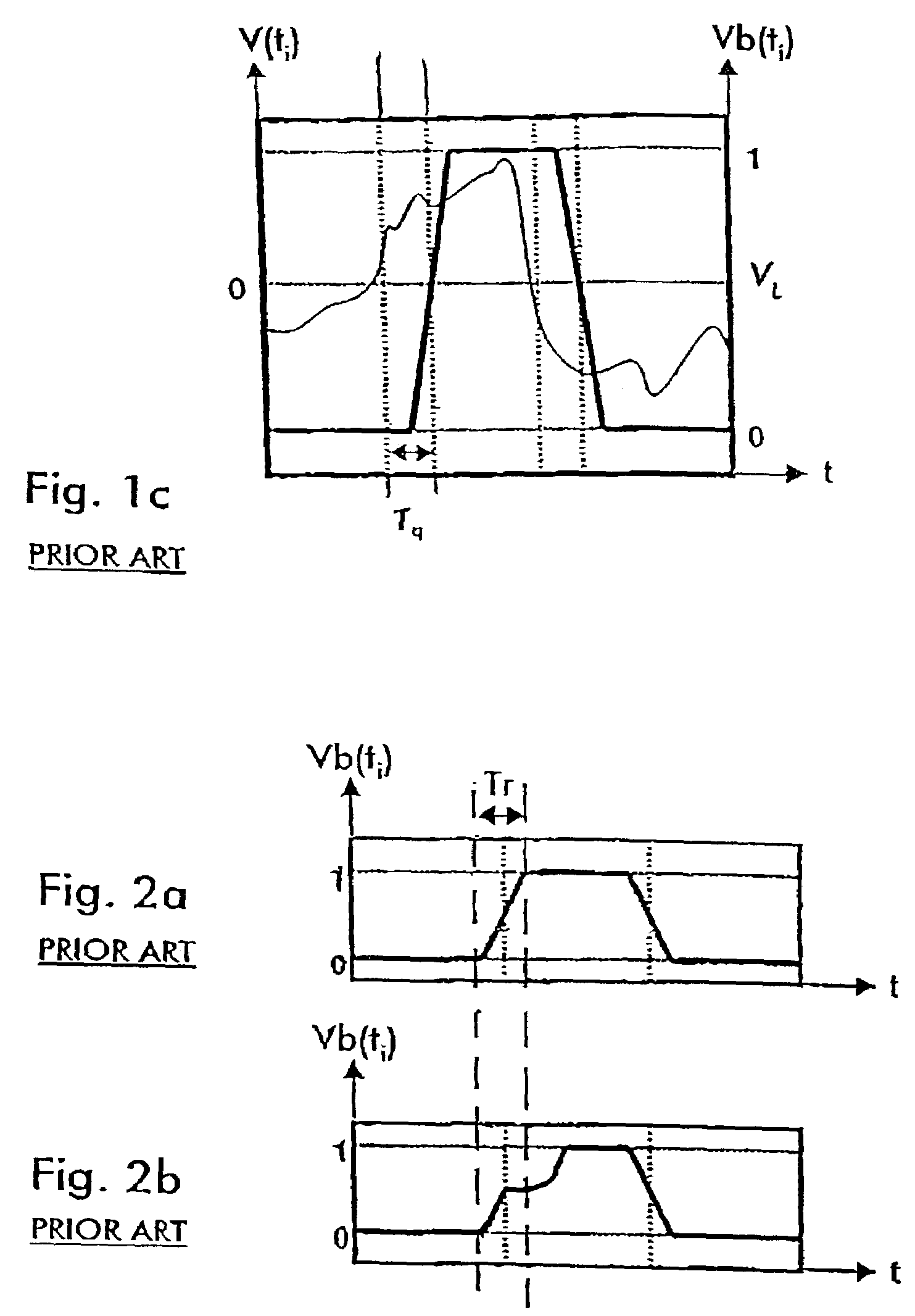Method and apparatus for improving the performance of delta-sigma modulators
a technology of delta-sigma modulator and delta-sigma, applied in the field of comparator, can solve the problems of limiting the signal-to-noise ratio (snr) of the dsm, limiting the signal-to-noise snr performance that can be achieved, and deviations from ideal behavior. achieve the effect of improving the performance of the dsm and reducing the metastability errors
- Summary
- Abstract
- Description
- Claims
- Application Information
AI Technical Summary
Benefits of technology
Problems solved by technology
Method used
Image
Examples
Embodiment Construction
[0046]Each of the comparators 10 used in delta-sigma modulators (DSMs) is made up of at least three latch stages as shown in FIGS. 5b and 5c. Each latch stage is preferably a D-type transparent latch the same or similar to the bipolar latch circuit shown in FIG. 5a. The input to the first latch stage 20 in each comparator 10 is effectively analog, in contrast to the digital outputs provided to each subsequent latch stage in the comparator 10. Also, the first stage 20 of each comparator 10 in the DSM has a respective distinctive trip point, so that each comparator produces a respective distinctive stream of bits (bk) as its output (Vb).
[0047]The first latch stage 20 in each comparator circuit 10 samples the input signal at the falling edge of the clock signal and regenerates the input signal to a valid logic level. The last stage 24 in each comparator 10 provides a current source that permits the comparator's output S1–Sn to slew between the given voltage levels that define logic lev...
PUM
 Login to View More
Login to View More Abstract
Description
Claims
Application Information
 Login to View More
Login to View More - R&D
- Intellectual Property
- Life Sciences
- Materials
- Tech Scout
- Unparalleled Data Quality
- Higher Quality Content
- 60% Fewer Hallucinations
Browse by: Latest US Patents, China's latest patents, Technical Efficacy Thesaurus, Application Domain, Technology Topic, Popular Technical Reports.
© 2025 PatSnap. All rights reserved.Legal|Privacy policy|Modern Slavery Act Transparency Statement|Sitemap|About US| Contact US: help@patsnap.com



